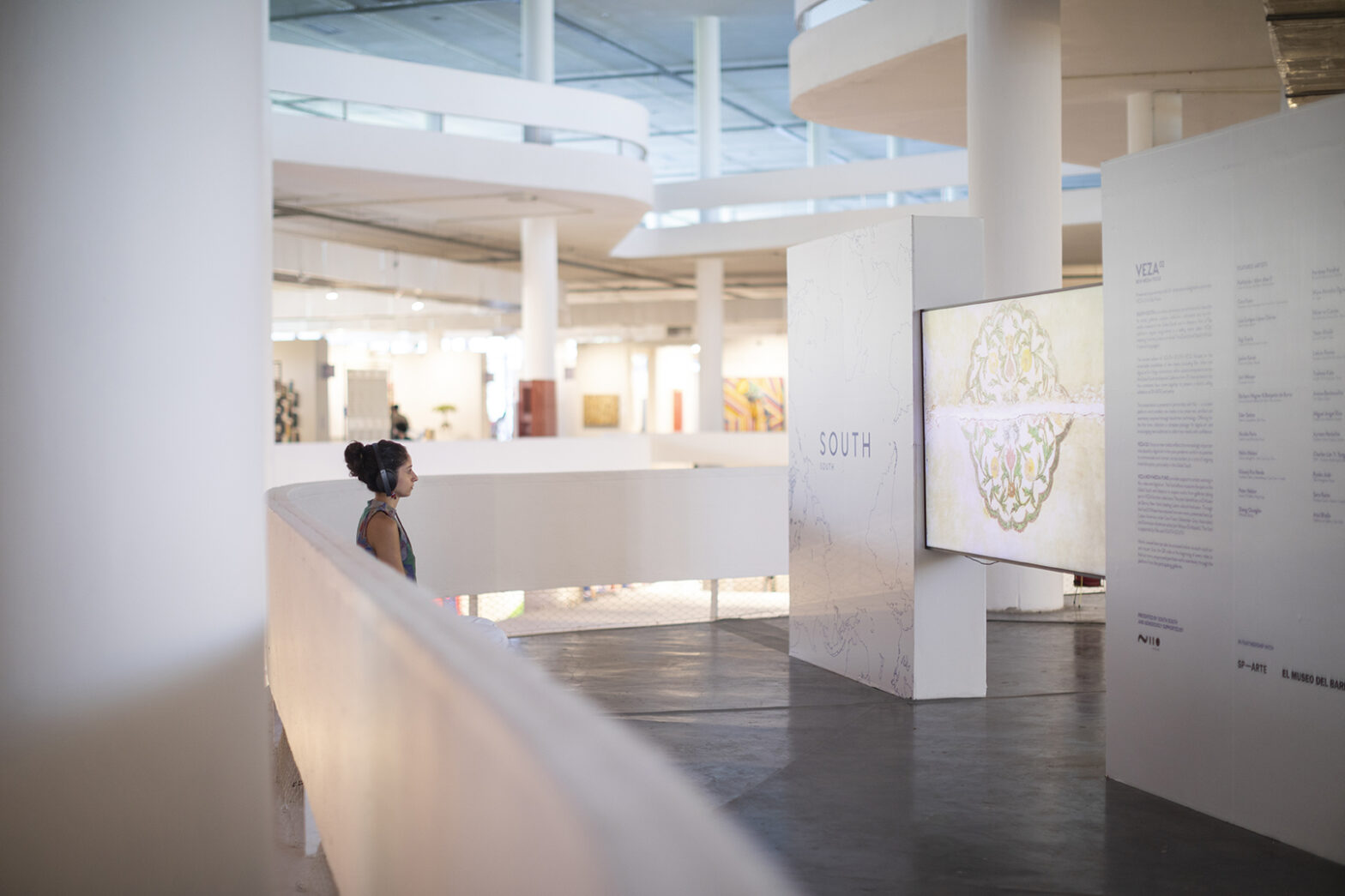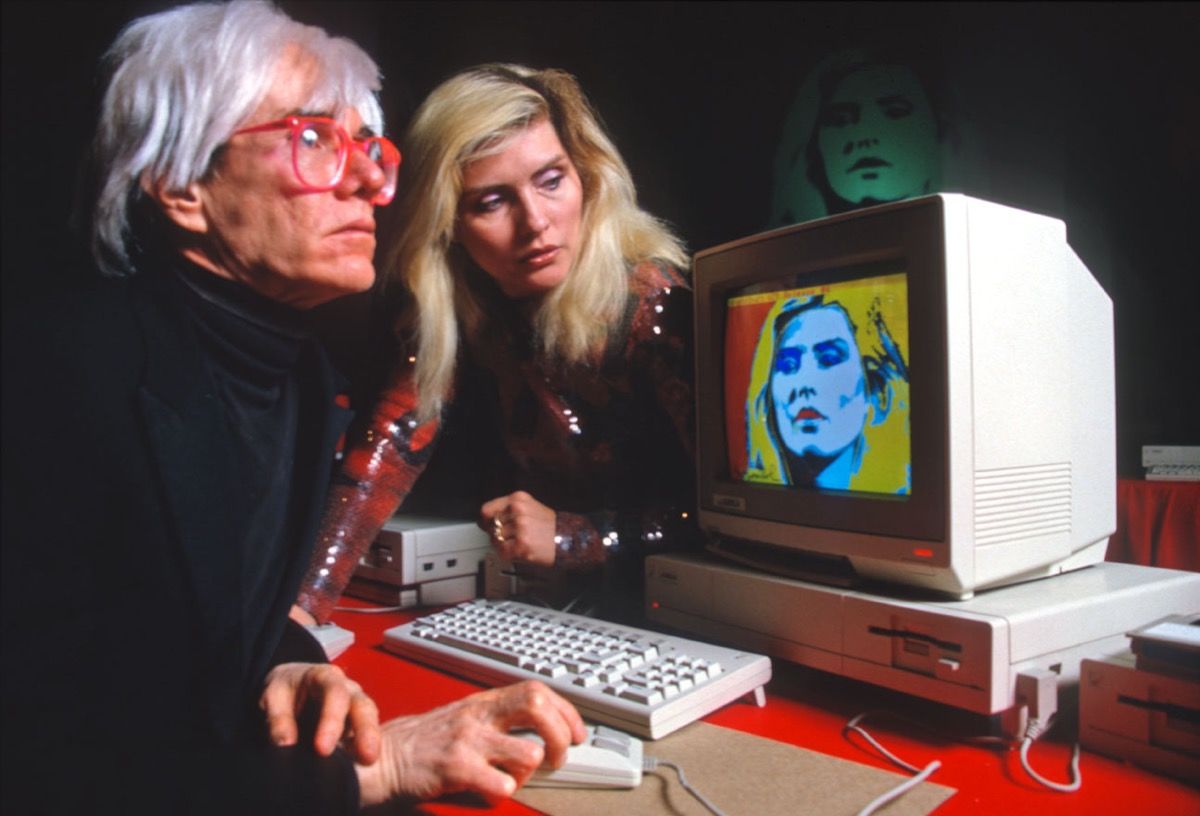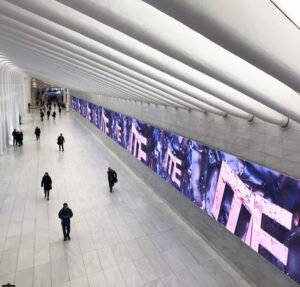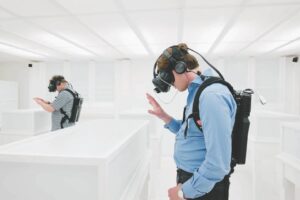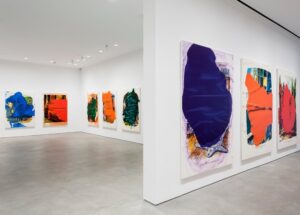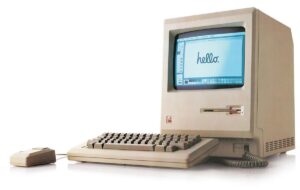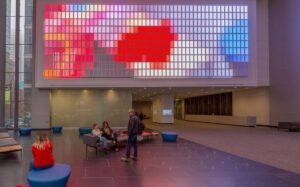This month we want to highlight our meaningful partnership with SOUTH SOUTH on its second edition of VEZA. SOUTH SOUTH is an online community, an anthology, an archive and a resource for artists, galleries, curators and collectors, institutions and non-profits invested in the Global South.
VEZA 02 features a digital showcase of seminal video art from the Global South which coincided with the April 2022 edition of SP–Arte in Brazil. An exclusively designed installation powered by Niio was set up at the fair, presenting selected video art works.
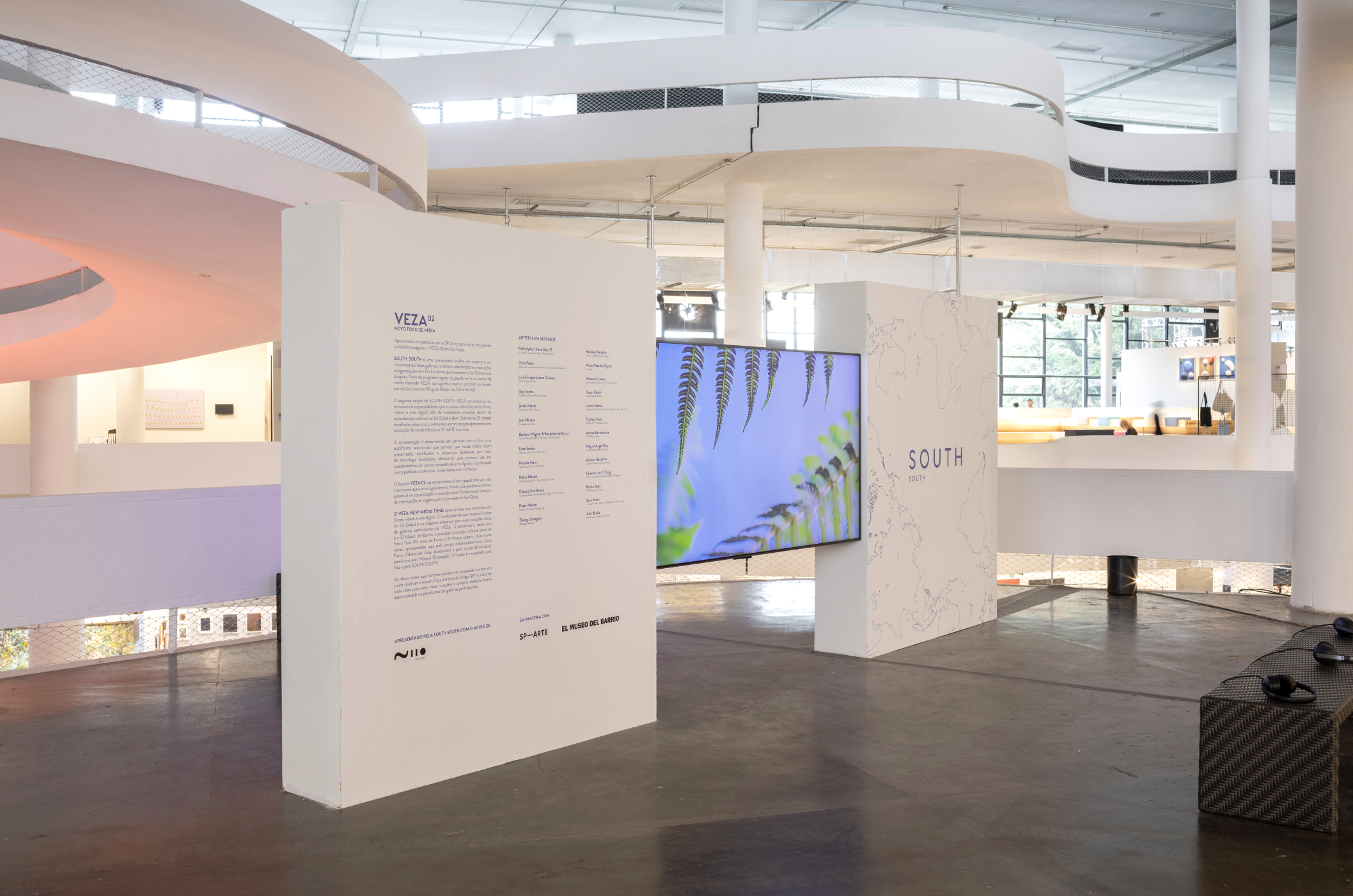
SOUTH SOUTH Veza takes its name from the isiZulu word which means “to show, produce, or reveal” and presents its audience with a new way to experience and engage with new media artworks.
VEZA 02 also boasted a robust curated art programme titled Bending the Axis. This year’s programme was curated by Meyken Barreto, Uche James Iroha, and the curatorial duo Carlos Quijon, Jr. & Kathleen Ditzig and was made possible with the generosity of Mr. Jorge M. Perez and the inaugural SOUTH SOUTH x El Espacio 23 Curatorial Residency. It included works by emerging and established artists and a Talks Programme engaging cultural practitioners from across the globe which took place from 31 March – 10 April 2022.
Veza 02 focuses on digital and video art, and the remarkable possibilities of new media, as well as its core activity of facilitating new connections within the cultural ecosystems across the Global South and beyond.
Galleries from 25 cities spread across five continents came together to present a selling exhibition of important video artworks at SP–Arte (Sāo Paulo) and simultaneously online. This marked SOUTH SOUTH ’s transition into a hybrid model through collaboration with regional fairs.
Niio supported and powered both the physical exhibition and the online presentation through our state of the art technology platform which enables new media to be preserved, certified and seamlessly acquired through Niio and the Blockchain, with an accompanying NFT.
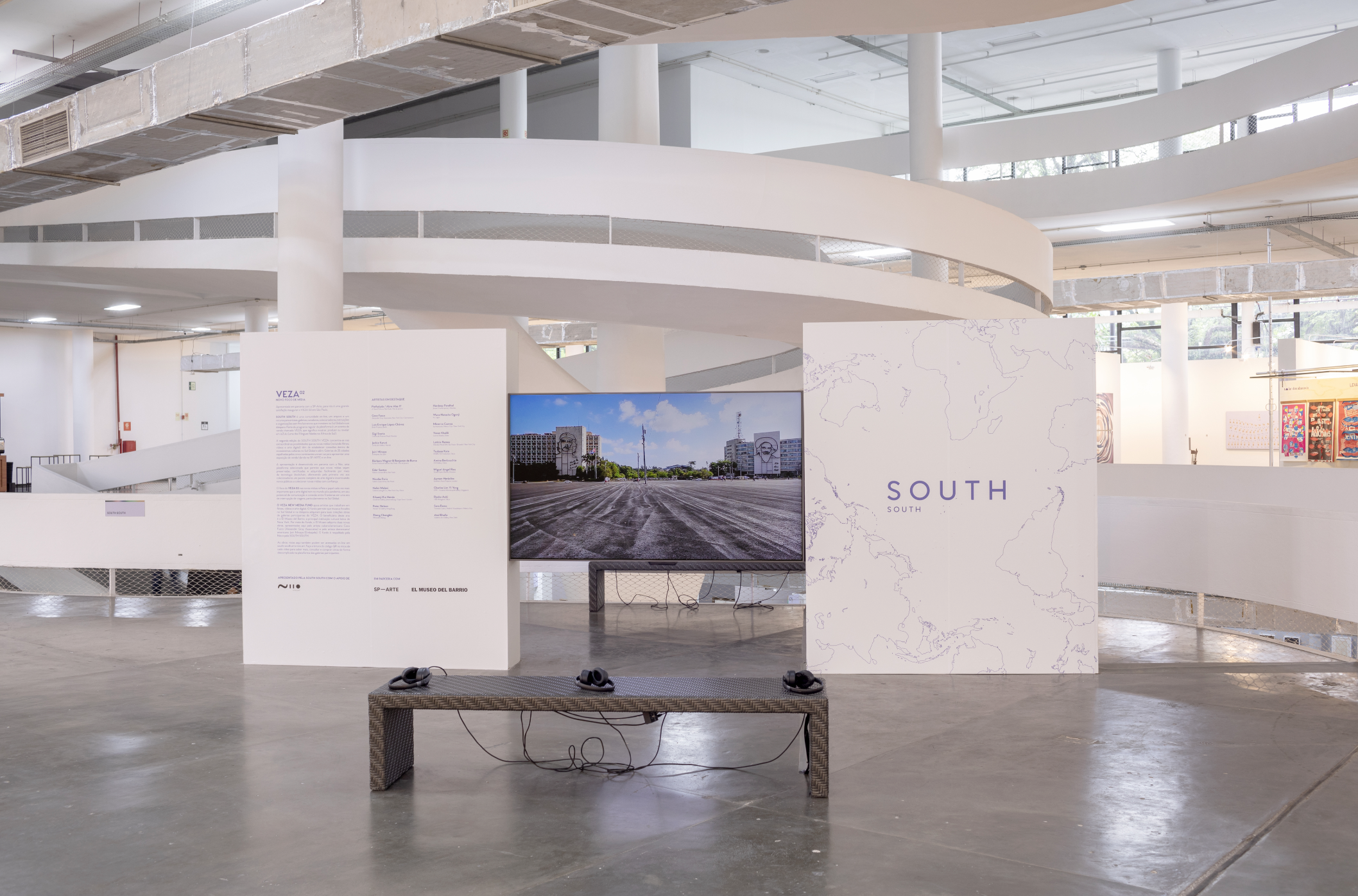
SOUTH SOUTH offers a repository and a space for new, shared value systems centered on community, collaboration and exchange. It is a central portal to experience the programs and artist profiles of galleries within and dedicated to the Global South.
The SOUTH SOUTH platform was conceived by Liza Essers, owner of Goodman Gallery as a response to the global pandemic and as an extension to an ongoing curatorial initiative established by Goodman Gallery in 2015.
Niio facilitates and enables the acquisition of new media and video art works and ownership through our highly advanced platform offering storage and preservation of digital works, securing NFT & blockchain technology for provenance and attribution, and providing the best in class display technology for showcasing screen based works, in-turn enabling art spaces and arts practitioners to shape their own narratives within the cluttered and developing conversations about the relationship between art, new technology and web3.
With the help of Niio, SOUTH SOUTH also launched the VEZA NEW MEDIA FUND which allows museums focused on the Global South and diaspora to acquire new media works from galleries taking part in VEZA for their collections.
This year’s beneficiary was El Museo del Barrio, New York’s leading Latino cultural institution. Niio together with SOUTH SOUTH has launched a $40,000 fund through which El Museo Del Barrio has acquired two new digital artworks: one that addresses the erosion of civil liberties by the high-profile Cuban-American artist Coco Fusco — The Empty Plaza/ La Plaza Vacia, 2012, represented by Alexander Gray Associates. Centrally located public squares are a key component of social and political life throughout Latin America, Caribbean cities, and the rest of the world. In The Empty Plaza/ La Plaza Vacia, artist Coco Fusco, inspired by the Arab Spring protests of 2011 explores discussions among Cubans about the reason that plazas were left vacant. In this work the Plaza de la Revolución in Havana becomes the protagonist in the artist’s mediation on public space, memory and revolutionary promise.
The second artwork acquired by El Museo Del Barrio through the Veza New Media Fund is Siboney, 2014 by the 32-year-old Dominican-American artist Joiri Minaya represented by Embajada gallery. The work Siboney is at once a mural painting and a performance in which the artist hand-painted the design of a found fabric onto a museum wall. The video work is accompanied by the song Siboney by Connie Francis composed by Ernesto Lecuona in 1929 allegedly while homesick, away from Cuba. Once the artist finished painting the mural she pours water on herself and scrubs the mural with her body while dancing to Siboney in doing so questioning the exoticism in the representation of black and brown women in the Caribbean, and to challenge these constructions and the control of the Other historically in order to reclaim the voice of these women.
Both video artworks were sold together with their accompanying NFT through Niio Art, and have been transferred to the museum via the Niio pro tool platform. We invite you to discover the VEZA exhibition and available artworks through Niio’s digital online catalog. We hereby want to give a special thanks to all participating featured artists and galleries:
Patfudyda / Abre Alas 17 A Gentil Carioca, São Paulo / Rio de Janeiro
Coco Fusco Alexander Gray Associates, New York City / Germantown
Luis Enrique López-Chávez Bode Projects, Berlin
Gigi Scaria Chemould Prescott Road, Mumbai
Jackie Karuti Circle Art Gallery, Nairobi
Joiri Minaya Embajada, San Juan
Bárbara Wagner & Benjamin de Burca Fortes D’Aloia & Gabriel, São Paulo / Rio de Janeiro
Eder Santos Galeria Luciana Brito, São Paulo
Nicolás Paris Galeria Luisa Strina, São Paulo
Nalini Malani Galerie Lelong & Co., New York City / Paris
Kiluanji Kia Henda Goodman Gallery, Johannesburg / Cape Town / London
Peter Nelson Hanart TZ Gallery, Hong Kong
Zheng Chongbin INKstudio, Beijing
Hardeep Pandhal Jhaveri Contemporary, Mumbai
Wura-Natasha Ogunji kó, Lagos
Minerva Cuevas kurimanzutto, Mexico City / New York City
Yazan Khalili Lawrie Shabibi, Dubai
Letícia Ramos Mendes Wood DM, São Paulo / Brussels / New York City
Tsubasa Kato MUJIN-TO Production, Tokyo
Amina Benbouchta OH Gallery, Dakar
Jorge Méndez Blake OMR, Mexico City
Miguel Angel Rios Sicardi Ayers Bacino, Houston
Ayrson Heráclito Southern Stars Projects, London
Charles Lim Yi Yong STPI – Creative Workshop & Gallery, Singapore
Ryoko Aoki Take Ninagawa, Tokyo
Sara Ramo Travesia Cuatro, Madrid / Guadalajara / Mexico City
Atul Bhalla Vadehra Art Gallery, New Delhi

